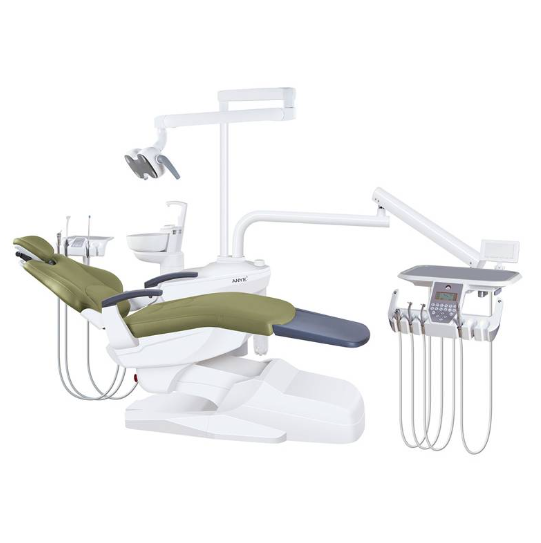Why Using Bacteria-Resistant Dental Units is Good for Kids' Oral Health
Maintaining optimal oral health for children is a priority for parents and healthcare professionals alike. The tools and equipment used during dental visits play a crucial role in ensuring a safe and hygienic environment for young patients.
One significant advancement in dental care that stands out is the integration of bacteria-resistant dental units. These units not only revolutionize the way dentistry is practiced but also offer substantial benefits for kids' oral health. In this post, the author would discover why this dental equipment is important.
One significant advancement in dental care that stands out is the integration of bacteria-resistant dental units. These units not only revolutionize the way dentistry is practiced but also offer substantial benefits for kids' oral health. In this post, the author would discover why this dental equipment is important.
The Science Behind Bacteria-Resistant Dental Units
Traditional dental units can be susceptible to bacterial growth if not adequately sanitized. Bacteria can accumulate in waterlines and various components of dental equipment, posing a potential risk of infection or cross-contamination.
However, the emergence of bacteria-resistant dental units incorporates innovative technologies designed to inhibit bacterial growth. These units employ materials and coatings that actively deter the proliferation of harmful microorganisms, significantly reducing the chances of infection transmission.
However, the emergence of bacteria-resistant dental units incorporates innovative technologies designed to inhibit bacterial growth. These units employ materials and coatings that actively deter the proliferation of harmful microorganisms, significantly reducing the chances of infection transmission.
What are the Features of Bacteria-Resistant Dental Units?
Different from traditional dental units, the bacteria-resistant children dental unit has several outstanding and modern features, including antimicrobial materials, specialized coatings, and filtration systems.
●Antimicrobial Materials
Bacteria-resistant dental units integrate advanced materials specifically engineered to deter microbial growth. These materials, often infused with antimicrobial agents or coatings, create inhospitable environments for bacteria, impeding their ability to thrive within the dental equipment. Silver, copper, or zinc nanoparticles are examples of elements used for their inherent antibacterial properties.
●Specialized Coatings
Coatings applied to critical components of the dental units play a pivotal role in preventing bacterial colonization. These coatings act as barriers, inhibiting the adhesion of microbes to surfaces and disrupting their ability to form biofilms. This disruption hampers the establishment of bacterial communities, thereby reducing the risk of contamination.
●Filtration Systems
Advanced filtration systems incorporated into these units ensure that the water supply used during dental procedures remains free from bacterial contaminants. These systems effectively eliminate or significantly reduce bacteria present in the waterlines, safeguarding against potential exposure to harmful microorganisms during treatments.
Why Using Bacteria-Resistant Dental Units?
In this section, the author would illustrate why using bacteria-resistant dental units.
Ensuring a Safer Environment for Children
For children, who may have developing immune systems, maintaining a sterile and germ-free dental environment is paramount. Bacteria-resistant dental units offer a shield against potential infections, providing a safer space for young patients undergoing dental procedures.
Parents can rest assured that their children are receiving dental care in an environment where the risk of bacterial contamination is significantly minimized.
Parents can rest assured that their children are receiving dental care in an environment where the risk of bacterial contamination is significantly minimized.
Reducing the Spread of Infections
Children, often more vulnerable to infections, can benefit immensely from dental units equipped to resist bacterial growth.
By curbing the spread of bacteria within dental equipment, these units mitigate the risk of infections not only for the child being treated but also for other patients sharing the same facilities. This preventative measure aids in fostering a healthier dental environment overall.
By curbing the spread of bacteria within dental equipment, these units mitigate the risk of infections not only for the child being treated but also for other patients sharing the same facilities. This preventative measure aids in fostering a healthier dental environment overall.
Promoting Long-Term Oral Health
The use of bacteria-resistant dental units aligns with the broader goal of promoting long-term oral health in children.
By minimizing the potential for infections or complications arising from contaminated dental equipment, these units contribute to a positive dental experience.
This, in turn, encourages regular dental visits and instills good oral hygiene habits, ensuring the maintenance of healthy smiles well into adulthood.
By minimizing the potential for infections or complications arising from contaminated dental equipment, these units contribute to a positive dental experience.
This, in turn, encourages regular dental visits and instills good oral hygiene habits, ensuring the maintenance of healthy smiles well into adulthood.
Conclusion
Understanding the intricate technologies and stringent maintenance procedures behind bacteria-resistant dental units underscores their pivotal role in safeguarding children's oral health.
These innovations not only revolutionize the standards of dental care but also exemplify a commitment to providing a safe, sterile, and efficient environment for pediatric dental treatments.
These innovations not only revolutionize the standards of dental care but also exemplify a commitment to providing a safe, sterile, and efficient environment for pediatric dental treatments.



Leave a comment